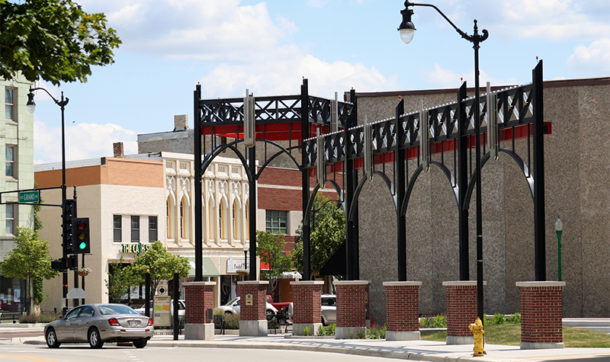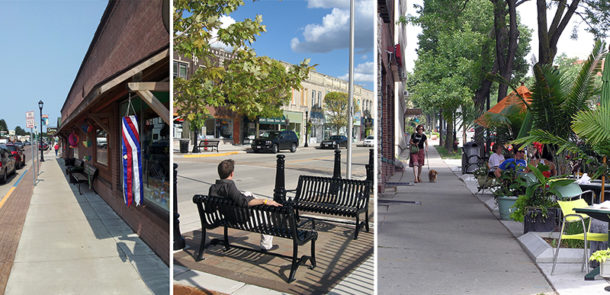Are Main Streets Making a Natural Comeback?

By Amanda Arnold, AICP In 2017 more brick-and-mortar store closings were announced than in any other year on record, driven in large part by online shopping. Yet plenty of consumers want a different experience – and planners are helping to provide that.

About the Expert:
Amanda Arnold has provided planning expertise as a consultant and from a variety of public sector positions, having worked for a regional planning commission, a transit authority, and jurisdictions of various sizes. Her vast experience includes completing comprehensive plans, overseeing capital improvement projects, coordinating with neighborhood groups, and reviewing subdivision and site plans.
Planners are designing downtowns that attract more people for shopping, business, dining, and more. Rather than viewing Main Streets as just physical locations or historic centers, smart planners are seeing them as the core of a community. Imagine Main Streets as linear parks with nature experiences and open spaces along the corridor. These new spaces have a feel-good atmosphere, provide a sense of well-being, and entice people to come back. Beloit, Wisconsin, is one example of a community taking steps to improve the look and feel of its downtown and surrounding areas.
Beloit’s City Center Plan started with an overall concept for downtown Main Street improvements. Features from the plan have been implemented as funding became available.
This is more than just adding trees to a Main Street, although that does help. Studies show there are numerous health benefits that result from increased access to nature, including on a Main Street:
- Reduced anger levels
- Increased sense of belonging
- Mental stimulation
- Reduced cardiovascular disease risk
- Reduced HDL cholesterol
- Improved health for diabetes patients
- Reduced cortisol levels
- Restored attention and concentration levels
- Reduced blood glucose levels
- Stronger memory associations
- Increased levels of wonder and curiosity
Incorporating more nature into urban spaces also has proven economic and environmental benefits:
Economic Benefits of Nature in Downtowns
- More desirable spaces lead to higher property values.
- Worker productivity and job satisfaction increases.
- People are more likely to stay longer and come more frequently, leading to increased sales.
- Consumers are willing to pay more for goods.
- Users will travel a longer distance to be in a desirable space.
- More populated areas tend to have less crime.
- Vegetated streets tend to result in lower traffic speeds, which increases pedestrian safety.
- Pavement surfaces last longer when protected by shaded areas.
Environmental Benefits of Nature in Downtowns
- Increased vegetation lowers the heat island effect in urban spaces.
- Stormwater management is improved.
- Air quality is better.
Which street would you rather spend time on?

Careful Planning of Downtown Spaces is Critical for Success!
Knowing how and where to place natural elements is critical to their success. While there is an upfront cost to hiring a planning expert to guide this process, the benefits of a well-designed space far outweigh the cost of mistakes down the road. Planners consider pedestrian safety; lighting needs; soils that trees and other greenery will need to thrive; snowfall and salting impacts; tree height and placement in relation to existing and/or future buildings and signage within the space; maintenance needs; impact to sidewalks; sun exposure; stormwater and drainage needs, etc. Numerous factors go into creating just the right atmosphere to capture each community’s unique character and space.
Contact Ayres’ Amanda Arnold, AICP, for more information regarding Main Streets or for general planning questions.

Post a comment: